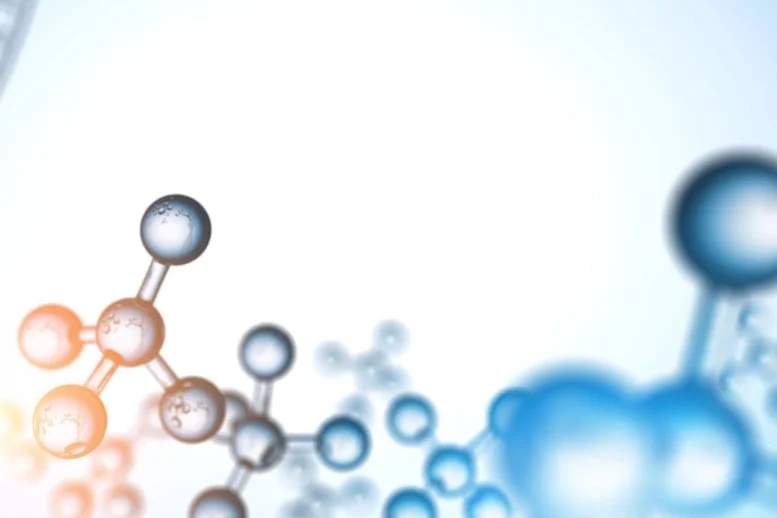博文
Nature:硼酸驱动的酶产生突破性的催化作用
||
Nature:硼酸驱动的酶产生突破性的催化作用
诸平
据荷兰格罗宁根大学(University Of Groningen, Groningen, The Netherlands)2024年5月15日提供的消息,革命性的有机化学:硼酸驱动的酶产生突破性的催化作用(Revolutionizing Organic Chemistry: Boronic Acid-Powered Enzyme Yields Groundbreaking Catalysis)。该校科学家们发明了一种含有硼酸的酶,这种酶通过定向进化增强了它的催化能力和选择性,为传统的化学反应提供了一种更可持续的选择。这一创新不仅加快了催化速度,而且实现了高对映选择性(enantioselectivity),这对于生产药物所需的手性分子至关重要。
硼酸已经在有机化学中使用了几十年,尽管没有在任何生物体中发现。
格罗宁根大学生物分子化学与催化教授 杰勒德·罗尔费斯(Gerard Roelfes)解释说,“它产生的化学反应与我们在自然界中发现的化学反应不同。”他的团队创造了一种以硼酸为反应中心的酶,然后使用定向进化使其更具选择性并提高了其催化能力。酶促反应比传统化学反应更可持续,因为它们发生在低温下,没有有毒溶剂。相关研究结果于2024年5月8日已经在《自然》(Nature)杂志网站发表——Lars Longwitz, Reuben B. Leveson-Gower, Henriëtte J. Rozeboom, Andy-Mark W. H. Thunnissen, Gerard Roelfes. Boron catalysis in a designer enzyme. Nature, Published: 08 May 2024. DOI: 10.1038/s41586-024-07391-3. https://www.nature.com/articles/s41586-024-07391-3
硼在有机化学中的应用可追溯到70多年前,并于1979年获得诺贝尔化学奖(The Nobel Prize in Chemistry 1979)。近年来,人们对硼作为催化剂的兴趣越来越大,但到目前为止,它在化学工业中的应用是有限的。杰勒德·罗尔费斯指出:“到目前为止,硼催化速度太慢,不太适合对映选择性反应(enantioselective reactions)。”
这些类型的反应被用来制造手性分子,这些分子可以以两种互为镜像的形式存在,就像人的左手和右手一样,因此被称为手性化合物(chiral compounds)。在许多药物中,两种手性化合物都能产生不同的效果。因此,有选择地生产合适的手性化合物是很重要的,特别是对制药业来说。
扩展的遗传密码(Expanded genetic code)
“为了使这成为可能,我们开始将硼引入一种酶。我们的团队在设计自然界不存在的酶方面有着悠久的历史。”杰勒德·罗尔费斯小组使用扩展的遗传密码将含有活性硼酸基团的非天然氨基酸引入酶中。“利用这项技术,我们可以在DNA水平上确定氨基酸在蛋白质中的位置。”
一旦他们制造出一种以硼酸为反应中心的酶,他们就可以利用定向进化来提高其效率,从而加快催化速度。此外,通过将硼酸置于酶的手性环境中,我们能够实现高度的对映选择性催化。上述发表在《自然》(Nature)杂志上的这一反应就是其原理的证明,并展示了利用酶中硼的催化能力的方法。
生化催化(Biocatalysis)
利用酶制造有机化合物对制药业来说很重要。“在推动以更环保、更可持续的方式生产药物的过程中,他们正在寻求用生物催化来取代传统的化学反应。”格罗宁根大学正在为实现这一目标作出协调一致的努力。“我们在格罗宁根大学科学与工程学院(Faculty of Science and Engineering)有许多研究小组从事这类工作,使用不同的方法为化学工业创造生物催化解决方案。”在这种情况下,杰勒德·罗尔费斯和他的团队将继续开发他们的硼酸酶,并创造其他类似的新酶。
这项工作得到了荷兰教育、文化和科学部{Netherlands Ministry of Education, Culture and Science (Gravitation programme no. 024.001.035)}、欧洲研究委员会{European Research Council (ERC advanced grant 885396)}以及利奥波迪纳-国家科学院博士后奖学金{Leopoldina - National Academy of Sciences for a postdoctoral fellowship (LPDS 2021-11)} 的资助。
上述介绍,仅供参考。欲了解更多信息,敬请注意浏览原文或者相关报道。
Enzymes play an increasingly important role in improving the benignity and efficiency of chemical production, yet the diversity of their applications lags heavily behind chemical catalysts as a result of the relatively narrow range of reaction mechanisms of enzymes. The creation of enzymes containing non-biological functionalities facilitates reaction mechanisms outside nature’s canon and paves the way towards fully programmable biocatalysis1,2,3. Here we present a completely genetically encoded boronic-acid-containing designer enzyme with organocatalytic reactivity not achievable with natural or engineered biocatalysts4,5. This boron enzyme catalyses the kinetic resolution of hydroxyketones by oxime formation, in which crucial interactions with the protein scaffold assist in the catalysis. A directed evolution campaign led to a variant with natural-enzyme-like enantioselectivities for several different substrates. The unique activation mode of the boron enzyme was confirmed using X-ray crystallography, high-resolution mass spectrometry (HRMS) and 11B NMR spectroscopy. Our study demonstrates that genetic-code expansion can be used to create evolvable enantioselective enzymes that rely on xenobiotic catalytic moieties such as boronic acids and access reaction mechanisms not reachable through catalytic promiscuity of natural or engineered enzymes.
https://wap.sciencenet.cn/blog-212210-1434554.html
上一篇:量子物理学的方法里程碑
下一篇:研究表明,优秀的跑步者比一般人多活近5年


